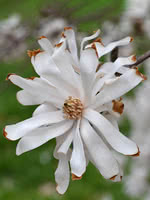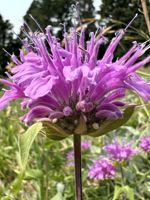Mon-Fri 9am - 5pm Mountain time
Royal Star Magnolia vs Wild Bergamot
Magnolia stellata Royal Star
Monarda fistulosa
NOT AVAILABLE THIS SEASON - MIGHT RETURN
(we don't know if or when this product will be restocked)
NOT AVAILABLE THIS SEASON - MIGHT RETURN
The Royal Star Magnolia, or Star Magnolia, is an early-blooming, white fragrant flower. It has a form that resembles a starburst, hence the name. This multi-stemmed deciduous shrub is extremely popular and has won the prestigious Award of Garden Merit from the Royal Horticultural Society.
The Royal Star Magnolia attracts birds and butterflies to your garden, with their large, showy flowers blooming even before it’s foliage which features a medium green leaf. They prefer slightly acidic soils.
Wild Bergamot is a native perennial wildflower that is known for its fragrant lilac-purple tubular flowers. The flowers grow in dense terminal heads and bloom from mid-summer to early fall. Deadheading spent flowers will encourage new blooms, prolonging its display. They attract pollinators such as bees, butterflies, and hummingbirds. It also serves as a host plant for the Raspberry Pyrausta (Pyrausta signatalis) butterfly.
Wild Bergamot belongs to the mint family, and its leaves, stems, and flowers are all edible. The leaves can be used to make tea or as a flavorful herb, with a taste often described as a blend of oregano and thyme.
It is resistant to deer and rabbits but can be susceptible to powdery mildew if planted too densely with poor air circulation. Wild Bergamot tolerates heat, drought, and poor soils, making it a low-maintenance addition to a variety of projects. It is well suited for pollinator gardens, wildflower gardens and naturalization projects.

